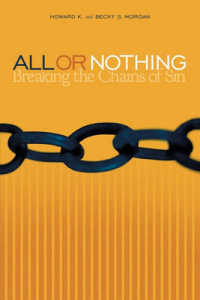- ホーム
- > 洋書
- > 英文書
- > Philosophy
Full Description
Combines phenomenology with the "enactivist" approach to consciousness theory and recent emotion research to explore the way self-motivated action plans shape selective attention, exploration, and ultimately the mind's interpretation of reality - in philosophy, psychology, cultural awareness, and our personal lives.
Action, Embodied Mind, and Life World combines embodied consciousness research, existential phenomenology, Gendlin's "focusing" concept, and recent self-organizational work on basic emotions (e.g., Panksepp, Frijda), to explore the way patterns of motivated action shape our interpretations of reality-personally, biologically, and within a sociopolitical community. Like a bat projecting sonar, we understand our world by sensing patterns of resistance against our own self-initiated actions. If hammering is the action, we find "nails" and "non-nails." Actions in turn express a self-organizing process rooted in motivational structures that presuppose values. These patterns of motivation therefore prefigure the shape of what we think or perceive. But the emotions, feelings, "sensings" through which we discern motivation are never just about what they seem, especially given ample incentives to distortion and self-deception. The "trigger" is the tip of an iceberg. This book works toward a coherent method for getting at the basement level of the action trajectories that motivate exploration, selective attention, and thus interpretations of reality-a crucial question in an age of motivated disinformation.
Contents
Introduction Interpreting Reality Presupposes an Understanding of Emotion
1. The Subterranean Role of Enactive Meaning: "PANIC," "SEEKING," and the Action Trajectories of Valuation
2. Focusing, Enactivity, and the Opacity of Directionality
3. We're Not in Behaviorism Anymore: Panksepp and Damasio on the Enactive Structure of Motivation
4. The Extended Value System and the Place of Instrumentality
5. Hannah Arendt and the Curious Nihilism of Grand-Scheme Value Systems
6. The Symbolic Dimension: Gendlin's Embodied Symbolization and the Limits of the Static Image
7. Total Failure of Inspiration: Lessons from the Sudden Murderer and the Family Annihilator
8. Lessons from Alexithymia: The Role of Phenomenological Reflection in Understanding Enactive Motivation
9. The Hot-Cold Meter: Unlocking Internal Conflict by Updating Hermeneutical Worldviews
10. A. J. Ayer's Stepchildren: Relativism, Truth, and the Crisis of Postmodernity
11. The Hermeneutic Circle: A Story of Internal Conflict
Conclusions The Embodied Mind and the "That for the Sake of Which"
Notes
References
Index








